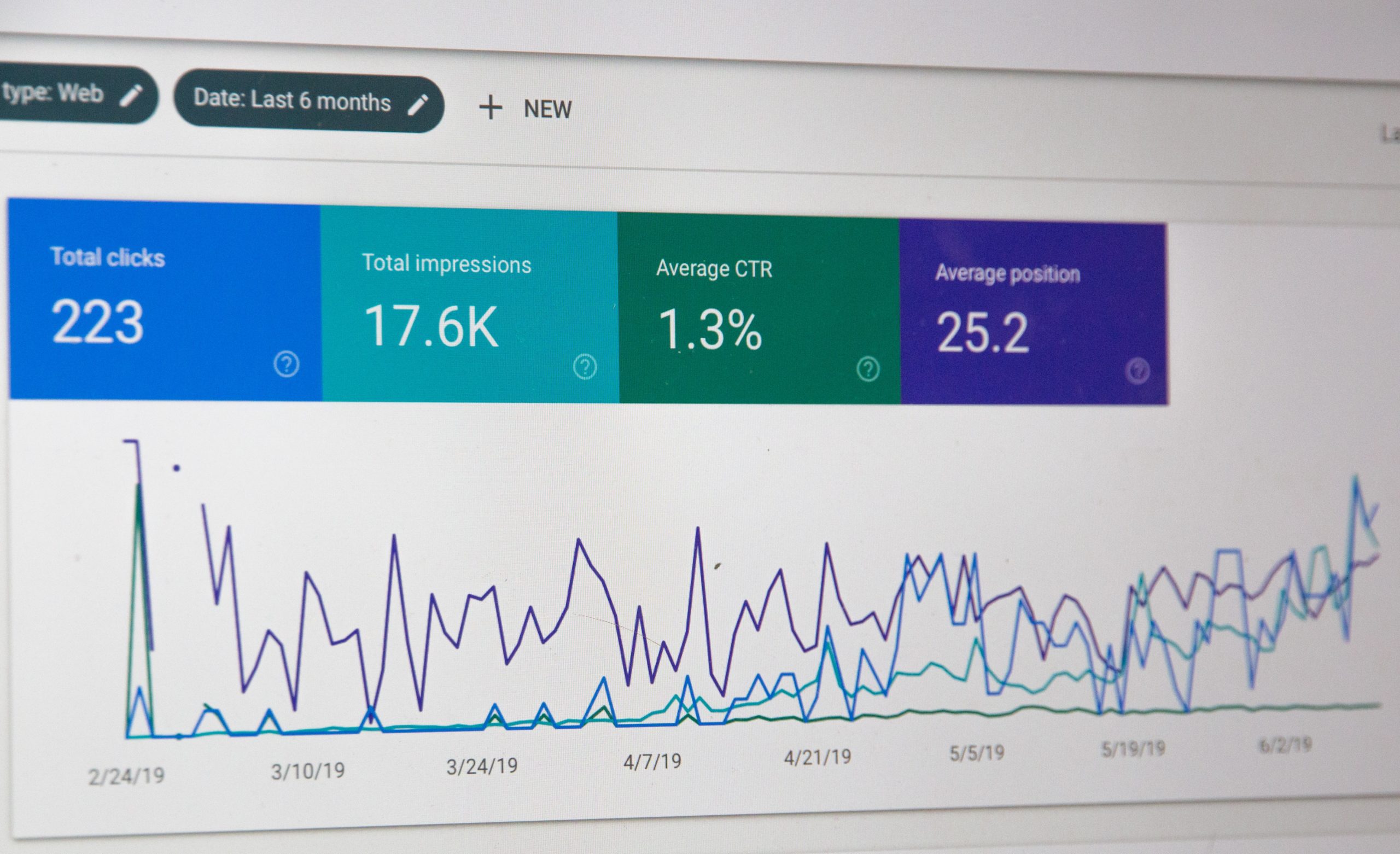Marketing
5
min read
Multi-channel measurement for 2022: MMM and Incrementality


Don't you want to read? Try listening to the article in audio mode 🎧
"Measuring is easy", said no one ever! What is multi-touch attribution and how it works
Multi-touch attribution is a model of measurement that takes into account several touchpoints on the journey that drives to a conversion, thus qualifying the contribution that each channel gives to the goal. The credit given to each touchpoint varies according to the type of multi-touch attribution model chosen to measure the impact of the digital campaign. Based on company needs and goals, marketing teams determine which model suits best for any specific campaign, depending on the length of sales cycle, KPIs, type and goal of the campaign, and more. There are many multi-touch attribution models and each one varies depending on the individual score assigned to the different channels. The most popular are:- Linear MTA Model
- U-shaped MTA Model
- Time Decay MTA Model
- W-shaped MTA Model
Getting over multi-touch attribution (MTA)
Understanding the role that each touchpoint plays in a conversion is crucial for budgeting, allowing devotion of funds to the most effective touchpoints while diverting funds away from ineffective channels. Multi-touch attribution (MTA) models have been proven ineffective for two reasons:- the platforms are sealed off from each other in terms of attribution;
- The models are not good at tracking the real-life, messy-middle, customer journey and thus provide unreliable feedback.
MTA gives a distorted picture
MTAs can sometimes be a bait-and-switch. Often, insiders rely on data and information generated by MTAs that are seldom telling the truth. Shortcomings include inaccurate analysis and incorrectly weighted channels, leading to a distorted picture which causes ineffective budgeting as a consequence.MTA has a single-minded approach
MTAs only focus on digital channels and have a blind spot when it comes to thinking about ‘external’ factors (seasonality, offline activities, etc.). These limitations should be kept in mind when deriving marketing insights from MTAs and they should only be partially trusted.Marketing Mix Modelling: what is and why it is more effective
Marketing Mix Modelling gives marketers the unfair advantage of breaking down data so as to determine the real contribution of each channel to a conversion, making it possible to measure past performance and chart a path for future, reliable success. It consists in a statistical analysis to estimate the impact of digital marketing channels together with offline activities on sales or any other specific conversion. Marketing Mix Models forecast what is likely to happen if deploying a specific set of tactics and, given a goal, are the key to boost the achievement of best results by re-allocating the budget on most valuable channels. At Booster Box we crafted a Marketing Mix Modeling tester that creates a basic version of a Marketing Mix Model, starting from imputed data. The tool is only a preliminary sample to take a sneak peek into a Marketing Mix Model, how it works and how it looks.The cookie less wasteland
The advertising world must face the change that the cookie apocalypse is bringing. As of now, almost half of open web users' actions are untraceable on Firefox and Safari. This number is bound to increase with the upcoming loss of third-party cookies.The looming threat of a cookie less world
New data privacy regulations (GDPR, CCPA, etc.) together with autonomous decisions by platform companies like Apple and Google, to place greater restrictions on third-party cookies, are going to cause major disruption which could bring ineffective advertising and negative impacts on revenue to the unprepared.A slippery cookieless slope
Even as recently as early 2022, organisations could draw on a wealth of data which provided a true 360-view of the buyer personas. However, the situation today is very different and will get worse: businesses are losing ground on the progress they've made in terms of targeting consumers, and are not even nearly ready for this shift.Cookie less scenario is subverting the status quo (?)
Things have changed abruptly and the certainty of access to consumers’ data is fading away. Marketing experts need to face this head on: if there are players losing marketing attributable revenue, there must be others picking up the pieces. Here’s a hard fact: since many lost the ability to target and track users, advertisers shifted spending to Apple Search Ads to help maintain results. Upshot: Apple Search Ads skyrocketed and app downloads attributed to advertising tripled in just one year. Take note. Faced with this situation, it is essential to safeguard the performance of marketing campaigns and limit any disruption to tracking and revenue. Unveiling the real path to conversion through Marketing Mix Modelling (a.k.a MMM) is a viable, ready-to-use solution in a landscape of new privacy norms.Understanding incremental value: Incrementality
Ad budgets don’t grow on trees or fall from the sky. Therefore, investing in ads where customers would have converted anyway, and/or investing in non-converting campaigns is a huge mistake and waste of resources. Marketing teams who are keen to allocate capital efficiently are always at the frontline in the battle to understand incremental value, cross-channel impacts and marginal returns.They make data-driven ad spend decisions accordingly.Incrementality is smartest
The best part of the plan is nothing can stop it. Incrementality attribution does not require cookies and does not rely on MTA paths. In simple terms, it withholds ad exposure to a statistically significant segment of the target audience (“control group”) whilst showing the ad to the broader audience (“test group”). The difference in results between the groups is the incremental contribution.Every budget has its place with incrementality
Incrementality makes it possible to flawlessly distinguish organic traffic from paid campaigns. This paves the way for scaling the most effective channels and avoiding paying for conversions that would likely have occurred free of charge. Some questions incrementality will answer:- What will be the outcome if we pause channel X tomorrow?
- What is likely to happen if we double the budget for channel Y?
- Which ad contributes the most to reach my goals?
Incrementality has the marketing spend bigger picture
In analytics, one of the toughest nuts to crack is taking into account all marketing activities, including external factors, offline channels and any other business. Spoiler, it's really hard. To make things more difficult, some solutions can be correct today and wrong tomorrow. It’s possible that a channel that is delivering a huge incremental lift today will have to be shut next year. It takes several technical experts and continuous monitoring to keep the ship under control and the trip smooth through the marketing storm.So is measuring properly a pipe dream?
The answer is no. We said in many ways that a marketing team’s main ambition is to be able to forecast the likely outcomes when deploying a specific set of tactics, thus reducing any deadweight loss by reallocating inefficient spend to the most effective touchpoints. Surprise: this can be achieved. With a lot of science, data analysis and modelling - three areas Booster Box excels in.
Article updated on: 09 August 2023

Don't Waste Your Talent. Turn It Into a Career With a Course That Fits Your Needs!
Talent Garden is your Digital Skills Academy, offering courses in Digital Marketing, UX Design, Digital HR and Data Analysis designed to launch your career.
Keep reading

4
min read
Attribution Models: what they are, what they are for and which are the most popular for Digital Marketing
In the digital world one hears increasingly of Attribution Models. Attribution models for Facebook, for Google Ads, for ...
Talent Garden
04/03/2022

7
min read
The Practical Guide to start using Google Data Studio
Digital Marketing measurement and reporting have changed dramatically in the last two decades. Greater complexity in ...
Talent Garden
30/06/2022

10
min read
5 Ways to Accurately Measure Advertising Effectiveness
Whether it’s checking your phone for the latest Instagram updates or simply driving to work, ads have become an ...
Talent Garden
17/09/2023

6
min read
Coworking: The Future For Safe, Flexible and Innovative Workspaces Post COVID-19
Whether your company was ready or not, the moment quarantine measures, lockdowns and social distancing was mandated, ...
Talent Garden
28/04/2020
